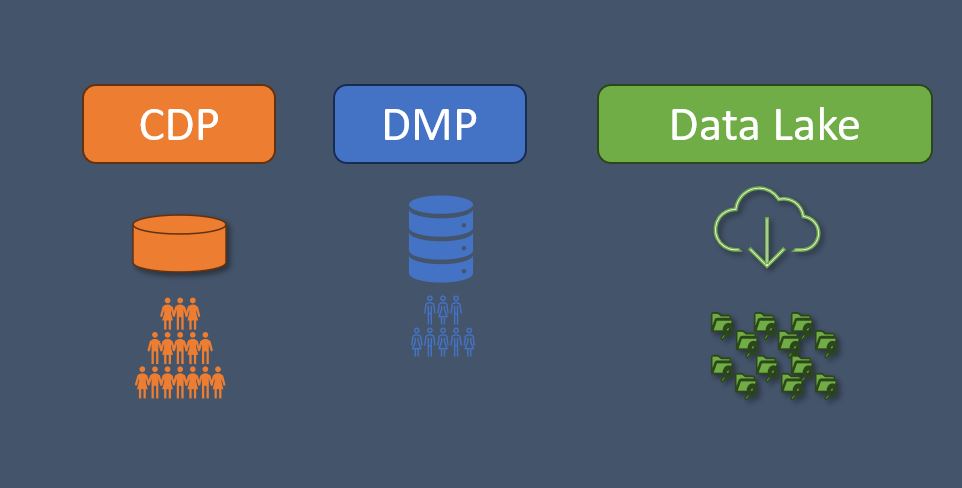What is Customer Data Platform (CDP)?
A Consumer Data Platform (CDP) is a software system that collects and organises client information from a variety of sources, including websites, mobile apps, CRM systems, and other touch points. It builds unified client profiles by combining data from many channels and devices.
CDPs are intended to provide a full perspective of each customer’s interactions and behaviours, allowing organisations to better understand and personalise marketing activities. They often provide capabilities like data integration, identity resolution, segmentation, analytics, and campaign orchestration.
The primary purpose of a CDP is to enable organisations to provide more tailored and relevant experiences to their customers at all stages of the journey. Businesses may boost customer engagement and loyalty by leveraging consumer data in a centralised and actionable manner, resulting in improved business outcomes.
- Purpose: CDPs are intended to collect, organise, and manage customer data from several sources in order to generate comprehensive and unified customer profiles.
- Focus: The fundamental goal of CDPs is to understand individual consumer behaviour and preferences in order to personalise marketing activities and improve customer experiences.
- Data Usage: Marketing teams often use CDPs to conduct targeted and personalised marketing campaigns, better customer segmentation, and increase customer engagement.
- Examples: Adobe Experience Platform, Segment, Salesforce Customer 360.
What is Data management platforms (DMP)?
DMP stands for Data Management Platform. It’s a technological platform that collects, organises, and analyses massive amounts of data from a variety of sources to assist marketers and advertisers in better understanding their target audiences and optimising their advertising campaigns.
Here’s how a DMP normally operates:
- Data Collection: A DMP collects information from several sources, including websites, mobile apps, CRM systems, offline sources, and third-party data suppliers. This data may include demographic information, surfing habits, purchase history, social media activity, and other information.
- Data Organisation: After collection, data is organised and stored in a centralised repository. This repository enables marketers to collect and harmonise data from multiple sources to create detailed customer profiles or audience segmentation.
- Data Analysis: DMPs offer capabilities for analysing and segmenting acquired data based on a variety of factors, including demographics, interests, behaviours, and purchase intent. Marketers can utilise these information to better understand their target demographic and deliver more relevant and personalised advertising messages.
- Audience Activation: Audience activation is an important aspect of a data management platform. Marketers can leverage audience segments defined in the DMP to target specific user groups across a variety of advertising channels, such as display ads, social media ads, email campaigns, and more. This increases the efficiency and efficacy of their marketing operations by targeting the appropriate people with the right message at the right time.
Overall, data management platforms (DMPs) let marketers use data to better audience targeting, campaign performance, and ROI across digital advertising channels.
- Purpose: DMPs are used to collect, organise, and analyse vast amounts of data from diverse sources in order to build audience segments for targeted advertising purposes.
- Focus: DMPs generally aggregate and anonymize audience data in order to better target advertising campaigns across various digital platforms.
- Data Usage: DMPs are widely used by advertisers and marketers to target particular audience segments with relevant advertising messages and optimise ad expenditure.
- Examples: Adobe Audience Manager, Oracle BlueKai, Lotame.
What is Data Lake?
A data lake is a centralised repository that can hold massive amounts of structured, semi-structured, and unstructured data on any scale. Unlike typical data warehouses, which need data to be structured before storage, data lakes allow you to store data in its raw format.
A data lake allows data to be stored in its native format without the need for previous processing or translation. This data comes from a variety of sources, including IoT devices, social media, websites, sensors, logs, and more. Data lakes are often created with distributed file systems or object storage systems that can grow horizontally to handle massive amounts of data.
One of the primary benefits of a data lake is its flexibility and scalability. It enables organisations to store any type of data without having to worry about structure or style up front. This facilitates the collection and analysis of heterogeneous datasets for a variety of applications, including analytics, machine learning, and business intelligence.
However, maintaining and governing data in a data lake can be difficult due to a lack of standardised structure and metadata. Without effective organisation and control, data lakes can quickly turn into data swamps, making it difficult to locate and trust the data. As a result, implementing data governance and metadata management procedures is critical for preserving data quality and keeping data lakes usable for decision-making.
- Purpose: Data lakes are large-scale repositories for storing organised, semi-structured, and unstructured data.
- Focus: Data Lakes are more generalised storage solutions than CDPs and DMPs, which are designed for specific use cases such as customer data management or advertising optimisation.
- Data Usage: Data lakes are used for a variety of purposes, including data analysis, machine learning, business intelligence, and data exploration.
- Examples: Amazon S3, Apache Hadoop, Google Cloud Storage.
In summary, CDPs manage customer data for personalised marketing, DMPs specialise in audience segmentation and targeted advertising, and Data Lakes offer a general-purpose storage solution for a variety of data types and analytics use cases. Each has a specific purpose inside the data management ecosystem.

